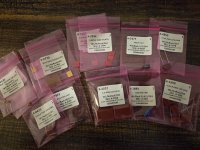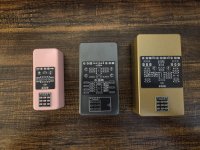Hi all!
Ive picked up a few boards to try building some pedals, only ever did a BYOC kit like 15 years ago. I think back then I tried a second pedal, it didn't work, and i decided not to worry about it anymore.
Anyway, last night I was going through the build docs and trying to put together an order from Tayda, I've done some research on component selection that helped a bit.
My question so far, is about selecting op amps. I'm building the Increment, a Barber Plus od, and it specifies "JRC072DB" which seems to be hard to find. Since I'm new, I don't know if there are obvious substitutions, or if any dual op amp will behave about the same. If I need to track the exact part down I will, ebay maybe?
If anyone has either some insight about what I can/should use, or where I might find it, that would be greatly appreciated!
Ive picked up a few boards to try building some pedals, only ever did a BYOC kit like 15 years ago. I think back then I tried a second pedal, it didn't work, and i decided not to worry about it anymore.
Anyway, last night I was going through the build docs and trying to put together an order from Tayda, I've done some research on component selection that helped a bit.
My question so far, is about selecting op amps. I'm building the Increment, a Barber Plus od, and it specifies "JRC072DB" which seems to be hard to find. Since I'm new, I don't know if there are obvious substitutions, or if any dual op amp will behave about the same. If I need to track the exact part down I will, ebay maybe?
If anyone has either some insight about what I can/should use, or where I might find it, that would be greatly appreciated!


